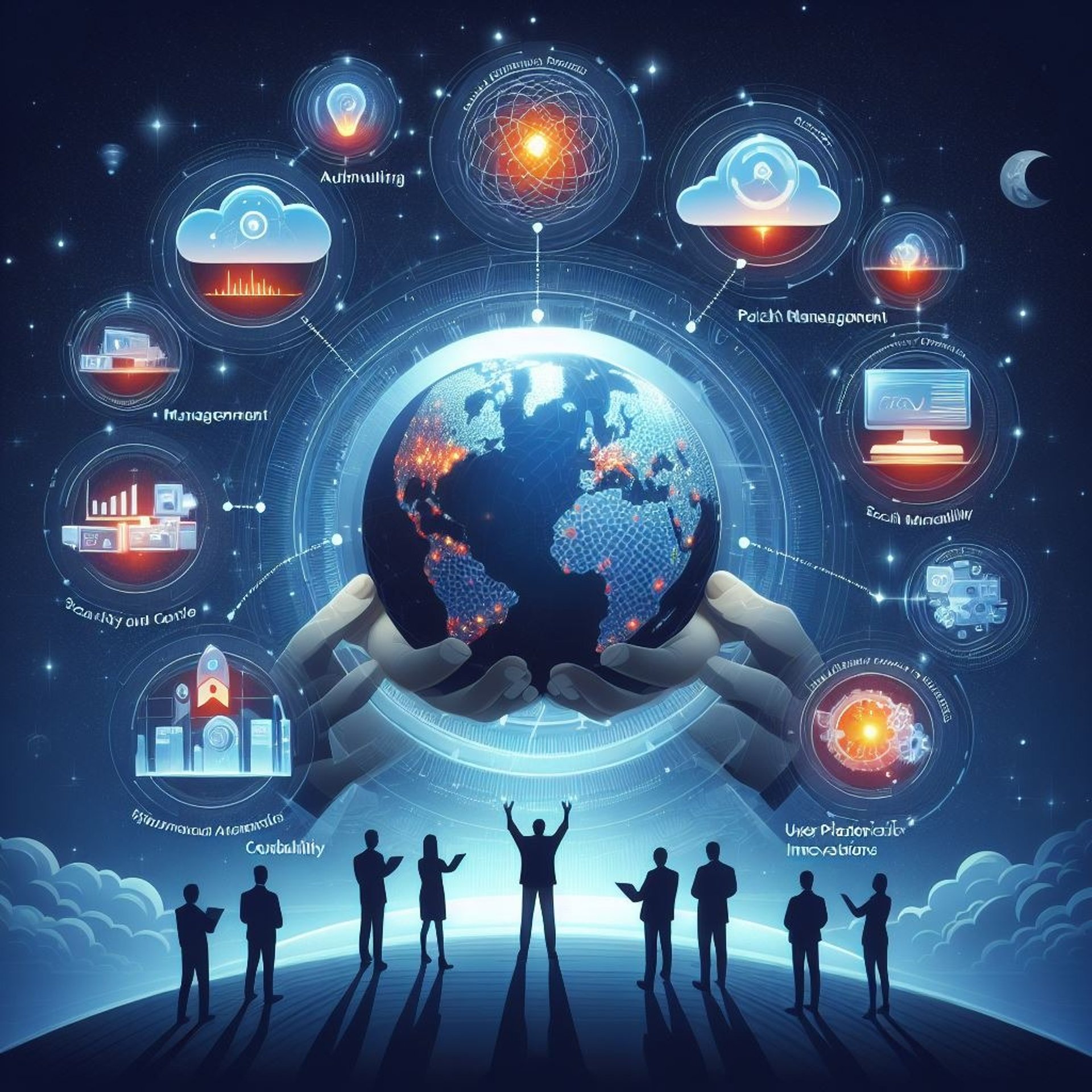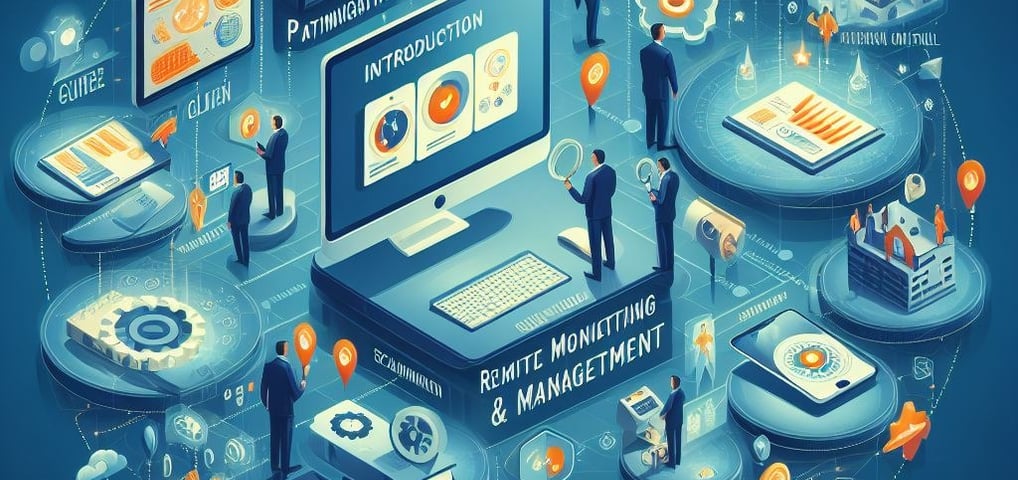
Mastering Remote Monitoring and Management (RMM): Unveiling Key Strategies for Success
A Comprehensive Guide to Remote Monitoring and Management (RMM)
IT SERVICES
4/11/20243 min read



Introduction to RMM
Remote Monitoring and Management (RMM) is a crucial aspect of modern IT infrastructure management. It allows businesses to monitor and manage their networks, systems, and devices remotely, ensuring smooth operations and minimizing downtime. In this blog post, we will delve into the key strategies for mastering RMM and achieving success in your organization.
Automated Monitoring and Alerts
One of the primary features of RMM is its ability to automate the monitoring of various network components and systems. With RMM tools, you can set up alerts and notifications for critical events such as system failures, network outages, or security breaches. These automated alerts enable IT teams to respond promptly and address issues before they escalate, ensuring uninterrupted operations and minimizing the impact on end-users.
Patch Management
Keeping software and systems up-to-date with the latest patches is essential for maintaining security and stability. RMM solutions provide a centralized platform for managing and deploying patches across multiple devices and systems. This ensures that critical security updates are applied promptly, reducing the risk of vulnerabilities and potential cyber-attacks.
Remote Access and Control
Remote access and control capabilities are at the core of RMM solutions. They allow IT teams to remotely access and troubleshoot devices, servers, and systems, regardless of their physical location. This feature significantly reduces the need for on-site visits, saving time and resources. It also enables IT teams to provide timely support to end-users, enhancing productivity and user satisfaction.
Security and Compliance
Maintaining robust security measures and complying with industry regulations are critical for organizations of all sizes. RMM solutions provide features like antivirus management, firewall configuration, and vulnerability scanning to ensure the security of network infrastructure. Moreover, these solutions help organizations adhere to compliance requirements by providing audit logs, reports, and documentation of security measures implemented.
Performance Monitoring and Reporting
Monitoring the performance of network devices, servers, and applications is crucial for identifying bottlenecks and optimizing resource utilization. RMM tools offer real-time monitoring and reporting capabilities, enabling IT teams to track key performance metrics, identify anomalies, and take proactive measures to enhance system performance. Detailed reports provide insights into trends, patterns, and areas that require improvement.
Scalability and Flexibility
As organizations grow, their IT infrastructure needs to scale accordingly. RMM solutions offer scalability and flexibility, allowing businesses to add or remove devices and systems seamlessly. These solutions can handle large-scale deployments and support diverse environments, ensuring that the RMM infrastructure grows with the organization's needs.
Integration and Compatibility
To maximize the effectiveness of RMM, it is crucial to ensure compatibility and integration with existing IT infrastructure and tools. RMM solutions should seamlessly integrate with other management systems, such as IT service management (ITSM) platforms, ticketing systems, and asset management tools. This integration streamlines workflows, reduces manual effort, and enhances overall efficiency.
User Experience and Accessibility
A user-friendly interface and an intuitive design are essential for effective RMM implementation. IT teams should be able to navigate the RMM platform easily, access relevant information quickly, and perform tasks efficiently. Additionally, RMM solutions should offer multi-platform support, enabling access from various devices and operating systems, and ensuring accessibility for IT teams regardless of their location.
Cost-effectiveness and ROI
Implementing an RMM solution can lead to significant cost savings in terms of reduced downtime, improved productivity, and efficient resource utilization. By automating tasks, streamlining processes, and minimizing manual interventions, organizations can achieve a higher return on investment (ROI) from their IT infrastructure. It is crucial to evaluate the cost-effectiveness of an RMM solution based on its features, scalability, and long-term benefits.
Best Practices and Implementation Strategies
To maximize the benefits of RMM, organizations should follow best practices and effective implementation strategies. This includes conducting a thorough assessment of their IT infrastructure, defining clear goals and objectives, involving key stakeholders, and selecting an RMM solution that aligns with their specific requirements. It is also important to establish proper training and documentation processes to ensure the smooth adoption and utilization of the RMM solution.
Future Trends and Innovations
The field of RMM is constantly evolving, with new trends and innovations emerging regularly. Some of the future trends include the integration of artificial intelligence (AI) and machine learning (ML) capabilities into RMM solutions, enabling predictive analytics and automated decision-making. Additionally, advancements in cloud computing and the Internet of Things (IoT) will further enhance the capabilities and reach of RMM tools.
Conclusion
Mastering Remote Monitoring and Management (RMM) is essential for organizations looking to optimize their IT infrastructure management. By implementing key strategies such as automated monitoring and alerts, patch management, remote access and control, security and compliance measures, performance monitoring and reporting, scalability and flexibility, integration and compatibility, user experience and accessibility, cost-effectiveness and ROI considerations, and following best practices and implementation strategies, organizations can achieve success in their RMM endeavors. Embracing future trends and innovations will further enhance the capabilities of RMM and drive continuous improvement in IT infrastructure management.
We hope this is helpful. Please let us know if you have any questions.
We appreciate your attention. Please like and share. Thanks
info@buzzyedge.com
